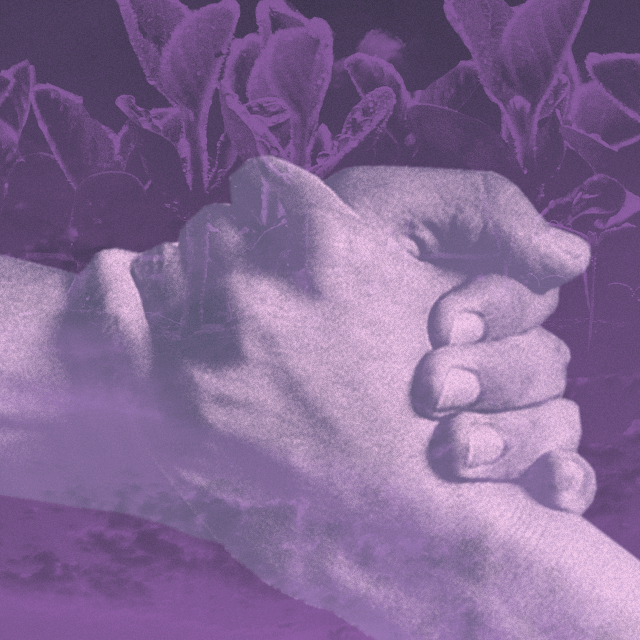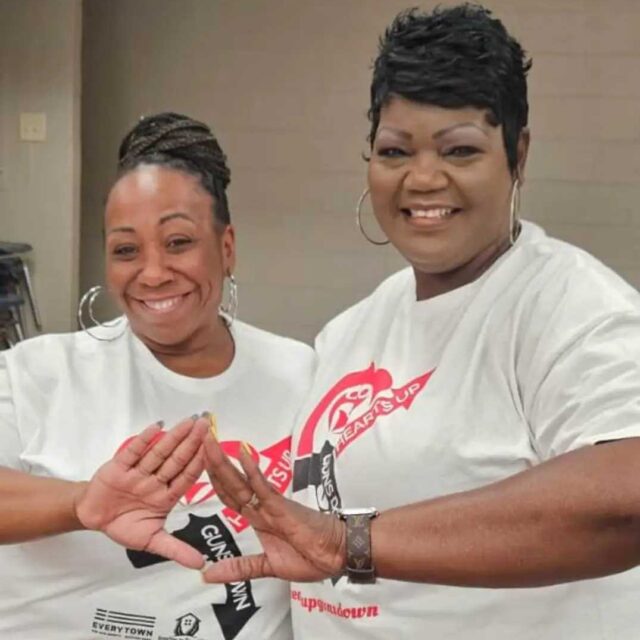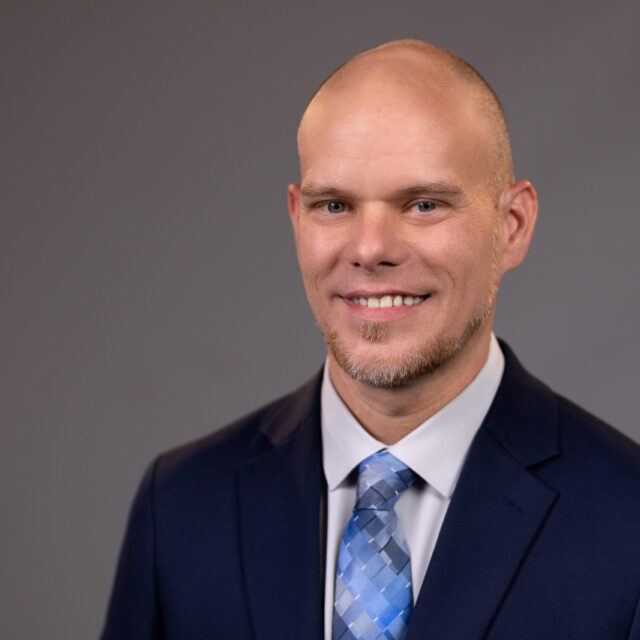What A Survivor of Intimate Partner Gun Violence Wants You To Know

10.3.2024
Content Warning
This blog post includes detailed descriptions of intimate partner violence with a gun. Please take care while reading. If you or someone you know is in crisis, please call the National Domestic Violence Hotline at 800-799-SAFE (7233), available 24/7, for confidential assistance from a trained advocate, or text START to 88788 from anywhere in the U.S.
For a more comprehensive list of free resources, please click here.
When Brooke was two weeks shy of her 24th birthday, her then-boyfriend of four years threatened her with a gun for the first time. “It was just this overwhelming sense, at any moment, I was just gonna die, and that would be it.”
Earlier in the day, she said, her boyfriend, a drug dealer, had physically abused her until she lost consciousness. When she awoke, Brooke said she attempted to dispose of his drugs. “I was disorientated and I was angry. More at myself than anything, but the choice I made was to flush everything he had down the toilet.”
He responded with an episode of rage where he confined her to the bathroom for nearly four hours, she said. “He hit me with the gun hard enough that he cracked my jaw.” More than 15 years later, Brooke can still recall his words, “‘Should I kill you? Should I not kill you?’”
Brooke’s experience of intimate partner violence is devastatingly familiar for far too many people nationwide. According to the Centers for Disease Control and Prevention, nearly half of all adult women and more than 2 out of 5 men reported experiencing intimate partner violence during their lifetimes.1Ruth Leemis, et al. “The National Intimate Partner and Sexual Violence Survey: 2016/2017 Report on Intimate Partner Violence,” National Center for Injury Prevention and Control, Centers for Disease Control and Prevention, 2022. For women who identify as Indigenous, like Brooke, these numbers are significantly higher. The National Institute of Justice released a 2016 study that found that, among American Indian and Alaskan Native women, more than 55 percent had experienced intimate partner violence. The report also found that the vast majority of Indigenous people experience violence by a non-Indigenous perpetrator—with 97 percent of female victims and 90 percent of male victims identifying the perpetrator as a member of another racial group.2Andre Rosay, “Violence Against American Indian and Alaska Native Women and Men,” National Institute of Justice, 2016.
In the U.S., the crisis of intimate partner violence is closely linked to the widespread and growing use of guns by abusers. The majority of women who are killed by an intimate partner are killed with a gun.3Everytown Research analysis of CDC, National Violent Death Reporting System (NVDRS), 2020. Analysis includes firearm homicides involving an intimate partner and women 18 years and older. See also, Everytown for Gun Safety Support Fund, “EveryStat: United States.” In an intimate partner violence situation where a firearm is present, the risk of homicide for women increases by 500 percent.4Jacquelyn Campell, et al. “Risk factors for femicide in abusive relationships: results from a multisite case control study,” American Journal of Public Health, 93(7), 1089–1097, 2011. That’s why blocking an abuser’s access to a firearm saves lives. But even for those who survive being threatened by an intimate partner with a gun, the trauma is long-lasting.
Brooke said her boyfriend eventually put her in a taxi and threatened her with harm if she ever reported what happened to the police. The fear of that day stayed with her. “I quit my job. I quit the company I was dancing with at the time. I moved to a new apartment … I changed my life,” she remembers. “I didn’t leave Chicago, but I just sort of disappeared.”
In the days after the incident, Brooke struggled to focus and described her mind as “fragmented.” She was eventually diagnosed with post-traumatic stress disorder and continues to experience symptoms two decades later, often struggling most in moments of stillness and boredom. In a 2023 Everytown report on the impact of gun violence trauma, one in three survivors of gun violence reported feelings of unsafety after the incident of gun violence. The study found that survivors of intimate partner gun violence, like Brooke, often uprooted their lives, relocated their homes, and left their careers behind in an effort to feel safer.5“Beyond Measure,” Everytown for Gun Safety, 2023.
With the help of a therapist who she described as “a second mom,” Brooke began to settle into her new life and better understand herself and the impact the abuse had on her. “I was always wanting to help and heal and make sure everyone was okay. But in the process of doing that, I sort of didn’t take care of myself and didn’t put myself first, and didn’t have boundaries. I was always afraid of everyone leaving me,” she explains.
Brooke also found herself working through the trauma of the generations who came before her—both the traumas she witnessed and the traumas she suspected but remained unspoken in her family. “A lot of this is perpetuated because we’re not showing healthy signs of love, and what it [looks like] to love someone and what is acceptable and what isn’t acceptable. Those are learned behaviors that we learn from our mothers and our fathers or our aunts and uncles,” said Brooke. “I know what my abuser came from too and that he was just perpetuating that cycle.”
The history of colonization and genocide experienced by many Indigenous people, combined with structural racism and historic disinvestment, impacted Brooke’s family directly.6Ronet Bachman, et al. “Violence Against American Indian and Alaska Native Women and the Criminal Justice Response: What is Known,” U.S. Department of Justice, 2008. “Disparities and Resilience Among American Indian and Alaska Native People who are Pregnant or Postpartum,” Centers for Disease Control and Prevention, 2024. “It’s perpetuated by other issues that we see in our communities, especially in Indigenous communities and other communities of color, where you don’t have access to healthcare and resources in the way that you need,” said Brooke. Her maternal grandfather, who was born and raised in the Choctaw Nation in what is formally recognized as the state of Oklahoma, struggled with alcoholism and became abusive when he drank, she remembers. But on the reservation where he lived first and then in a small, rural community where he moved later, there were few, if any, resources available to help him or his family heal. His children then experienced violence in their romantic relationships as adults. “It was mostly like verbal abuse [between my parents], yelling, screaming, berating, putting down, those types of things. That’s what I grew up with.” Brooke said. “I think it’s important to remember that there’s two components, and each component needs to be healed and protected for us to be able to work as a society. It’s not a one-sided issue.”
Brooke’s healing began slowly, finding peace in small moments during yoga classes, long walks, and meditation. “I just allowed my body and mind to heal. I would just be with it, be with myself,” said Brooke. And then over time, “I started rebuilding my life …. [and] started reflecting on the trauma I’d gone through.”
Brooke found a passion for healing others as both an herbalist and a doula. In 2017, she started volunteering with Moms Demand Action and quickly became an outreach lead, working with local organizations. She is pursuing a bachelor’s degree in public health at the University of Wisconsin Milwaukee and working full-time at a health and wellness company. She hopes to work in violence prevention after graduation.
“I wouldn’t be the person I am today—doing the things that I do—if I hadn’t gone through those experiences. Now, in some way, do I wish I hadn’t? Yes,” said Brooke. “But because I did, I’m able to do the work I do, to have the empathy that I have, to work with other survivors who are going through this, to work with women who are on the pathway to something like what I went through and prevent it.”





